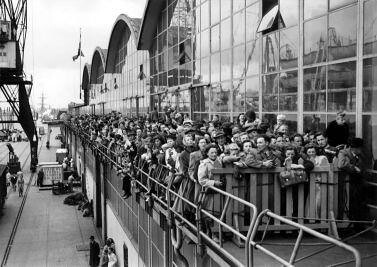Online records: Family cards of Rotterdam
The website
The Digital Family Tree of Rotterdam is the database of the city archive of Rotterdam. We looked at this database before, e.g. in 2008, in the article Online records: Rotterdam city archive. Earlier this year the archive added a great new resource: Scans of family cards (1880-1941) from Rotterdam, with an index!
What do they have?
Today we look at family cards, though the database has a lot more. Family cards are part of the population register. Originally, the population was a census-like register that was kept up to date. Because each page could have lots of updates and changes, the register could get messy. In 1880, Rotterdam changed their register to a card system, with one household per card: the family cards. These were easier to keep up to date, as cards could easily be replaced if they were full or messy.
In 1939 the family cards were phased out in favour of a new system, and by 1941 the cards were obsolete.
The cards are now archived in the Rotterdam city archive. They are scanned and indexed, and available online.
Family cards have lots of interesting information about a household. It lists all household members. New members of the household were added at the bottom, members that left were crossed out, usually with a remark about where they went. For each person listed you will find items like date of birth (and possibly death), maiden name (if applicable), address, occupation and religion, and any additional information that the city wanted to register about its citizens.
The images below are the front and back of the family card of Leendert de Kooning, father of the celebrated Dutch-born painter Willem de Kooning (who is listed twice on the card, under numbers 7 and 8).
Is there an English interface?
Yes, if you follow this link the search interface is English. Additional information, search results and of course the scans themselves are still in Dutch, though. You can use my genealogy dictionary to help you interpret the scans.
How do I use it?
Select Population register (and deselect the other options), fill in a family name and optionally a first name, and click Search. Browse through the search results and click the one that interests you. Click View the scan.
The scan will open in a new window. There are buttons for zooming in and out, for rotating the image, for printing and for downloading.
How much does it cost?
Nothing. Even viewing and downloading scans is currently completely free!
Future plans
I assume the family card project is completed. There will be other scanning and indexing projects in Rotterdam, though.
Conclusion
This is a great resource if you have Rotterdam ancestors in the late 19th or early 20th century.
Labels: Online genealogy, Rotterdam, Sources, Zuid-Holland









0 Comments:
Post a Comment
<< Home